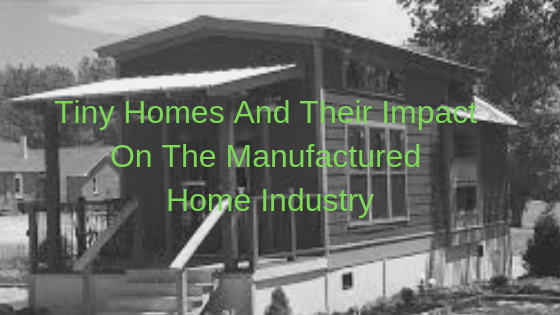Tiny Homes and Their Impact on the Manufactured Home Industry
December 14, 2018

Over the last few years, the tiny home craze has been on the rise. More and more American families are ditching the dream of an expansive house filled to the brim with furniture and belongings, in favor of a tiny home that offers simplicity and clean living. Unfortunately, state and local governments have presented numerous challenges and hurdles for tiny home buyers to overcome. As a result, mainstream home manufacturers, like Clayton, have started to get in on the trend. Here's how things are looking.
Why Tiny Homes?
Tiny homes offer the promise of a much simpler life. Many young couples and retirees look to tiny homes as a way to escape consumerism, live frugally, and ditch the clutter that comes with a full-size home. This is especially true for people who love to travel and hate the idea of having a big empty home to deal with while they're away. In addition, as we become more aware of global living conditions, we can see that tiny living is commonplace in other parts of the world, so why shouldn't we be doing the same thing? For proponents of tiny living, it is as much a personal decision as it is a cause for good.
The Challenges of Tiny Living
Up until this point, many tiny home dwellers have had to cut their own path here in the US, where builders are always focused on bigger and fancier homes. A lot of these dwellings were built by hand or converted from other structures that were not intended to be lived in full time such as shipping containers, sheds, campers, etc. In most cases, the tiny homes we see on TV are not permanently secured to the ground and they do not meet local building codes for safety or sanitary living. This covers everything from minimum room sizes to the type of foundation being used. In many cases, municipalities have blocked tiny homes altogether because they do not see them as a reasonable means for family living, nor a productive use of land that will add value to the community. There have been serious questions about the safety of these tiny homes in the event of bad weather or other unexpected circumstances.
How Home Manufacturers are Getting Involved
With the ongoing challenges mentioned above, many home manufacturers have stepped in to offer a solution that meets the needs of both consumers and municipalities. Companies that previously built manufactured homes that were designed to look just like traditional, full-size homes, are now turning their attention to building tiny homes using the same processes. The benefit of this method is that the home manufacturer is already a well-known member of the housing community, their products have already been vetted for safety and functionality, and municipalities trust these manufacturers to deliver a product that meets local codes. These homes have been built by experts and inspected, and they have a standardized installation process to ensure that they are secured properly to the ground.For consumers, there are also a number of benefits to this system. Primarily, consumers can still dictate the size and style of home they want from the manufacturer and have it delivered to their chosen location. These homes are still affordably priced, and they come with a warranty that protects the consumer for years to come.
By having old-school home manufacturers step up to the plate for tiny home buyers, we are seeing a smoother road to tiny home adoption. Municipalities trust these home manufacturers to know what works and what is safe, so they have fewer concerns about the finished product inside and out. At the same time, manufacturers are breaking into a new industry, following a new trend, and expanding their business model to meet the needs for affordable, efficient housing options all at once. Lastly, consumers are benefiting from more options and fewer worries about whether or not their tiny home will be allowed.
